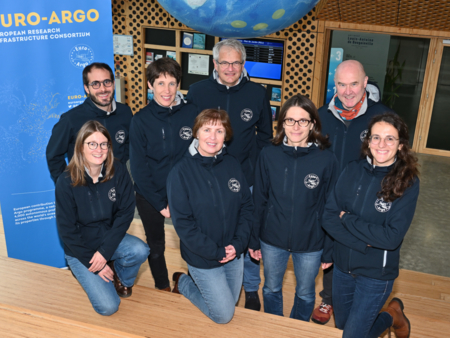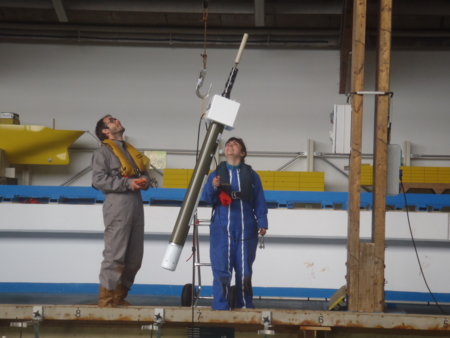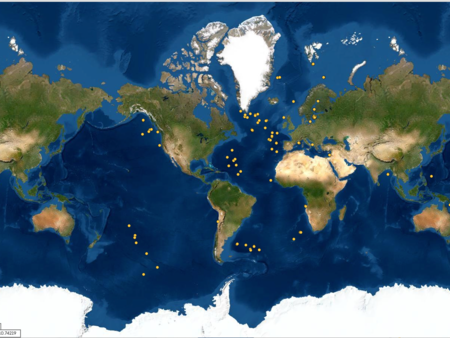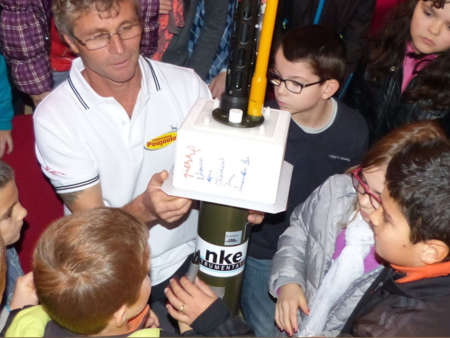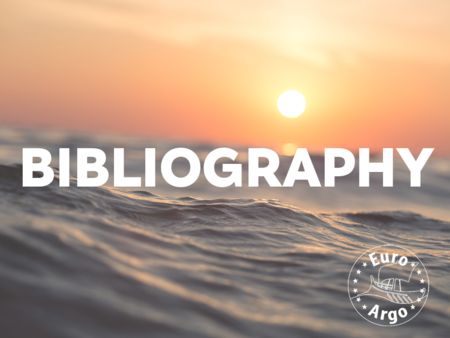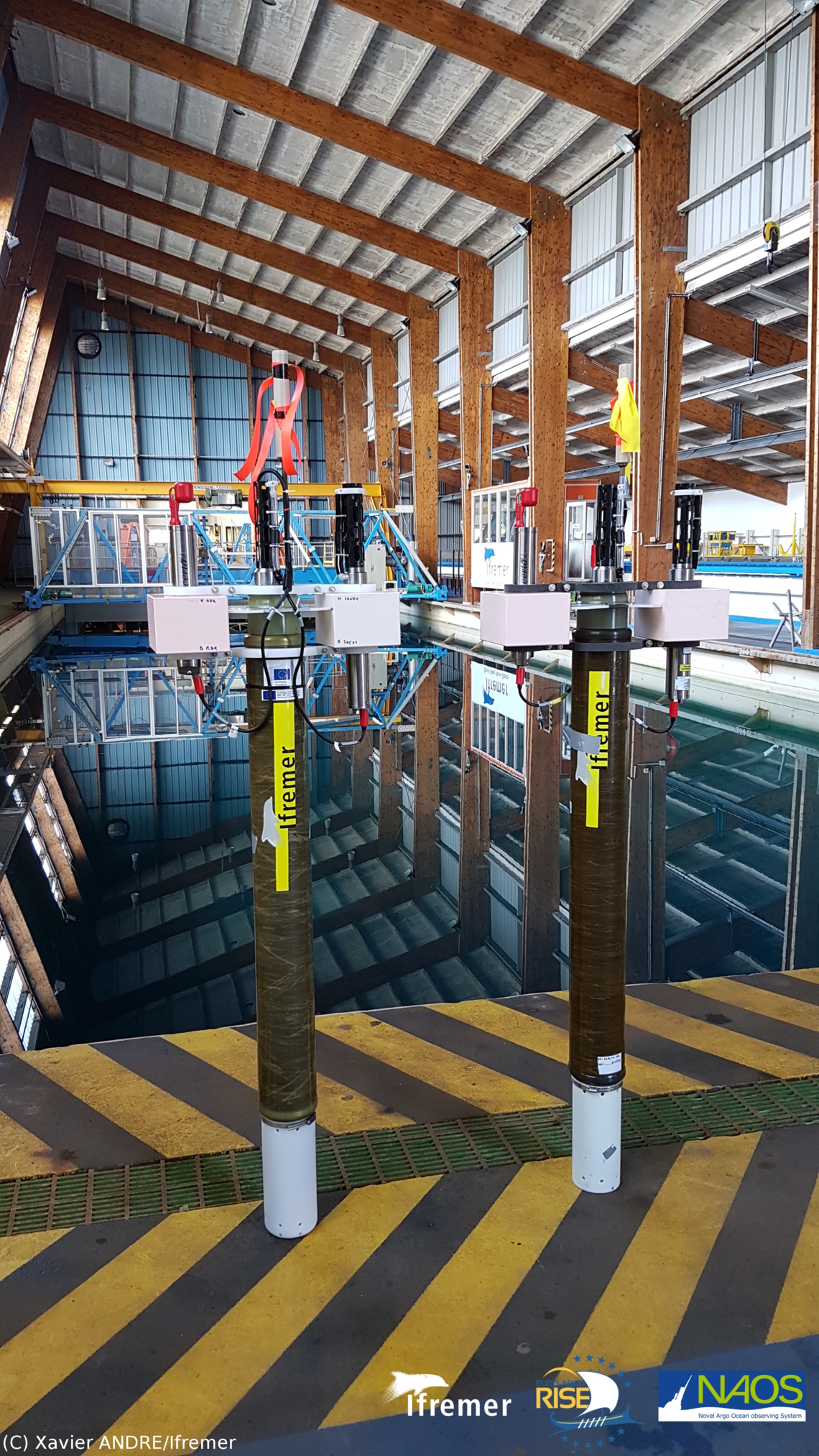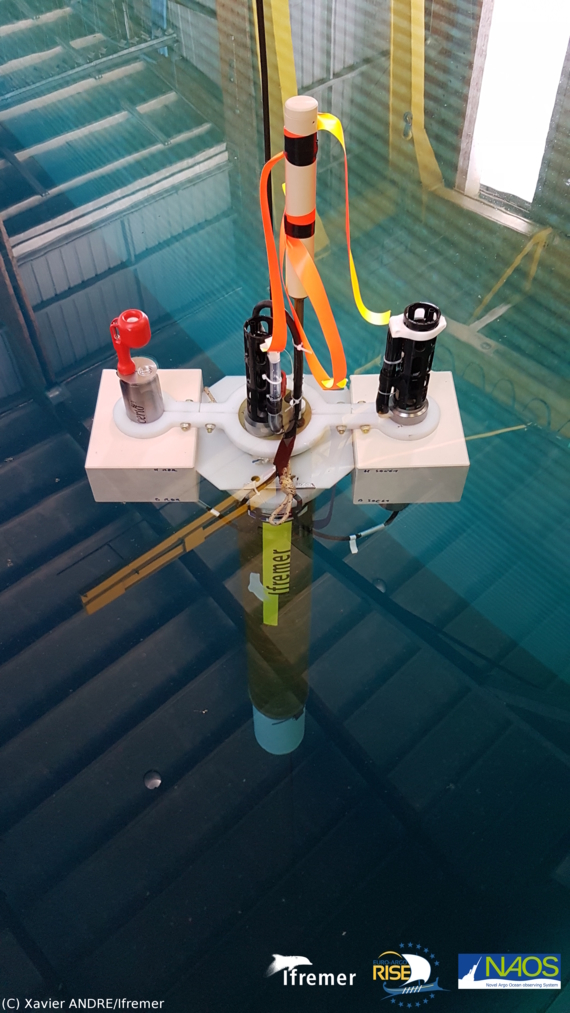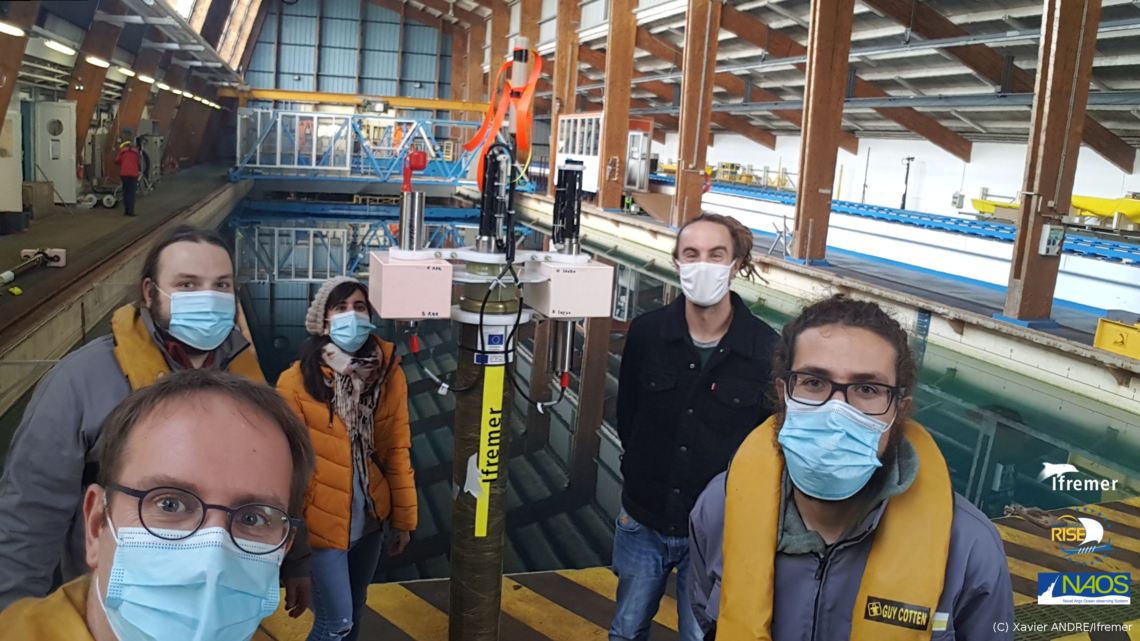Two 3-headed Deep-Arvor ready to be deployed!
Two 3-headed Deep-Arvor profiling floats have been successfully tested in the seawater pool at Ifremer. For what purpose? To determine which Conductivity, Temperature and Depth sensors (CTDs) are the most appropriate and the most highly accurate to monitor the abyssal ocean. They will be deployed in the Canary basin next December in collaboration with the Spanish Institute of Oceanography (IEO).
Why comparing three CTDs on a single Deep-Arvor float? To use 3 different Conductivity, Temperature and Depth sensors (CTDs) on a single Argo float will give LOPS/Ifremer and IEO scientific teams the opportunity to compare and assess performances of each sensor. They will help to quantify any biases, temporal drifts or pressure effects for the three sensors under typical float mission parameters, and thereby guide the international community for the global implementation of the Deep-Argo network. |
What are the three sensors compared?
Three Deep CTDs have been mounted on the Deep-Arvor profiling float for in situ intercomparison purposes, in the frame of the Euro-Argo RISE project:
- the RBR Concerto (left, red part, 0 – 6000db range);
- the Seabird SBE41 (center, black part, 0 – 4000db range);
- the Seabird SBE61 (right, black part, 0 – 6000db range).
The technical team (Technological Research and Development Unit – RDT) and the scientific team (Laboratory for Ocean Physics and Satellite remote sensing - LOPS) of the Euro-Argo RISE project (WP3 - Extension to deep ocean) worked hand in hand in the seawater pool at Ifremer facilities (Brest, France), to make a final test before deployment at-sea.

